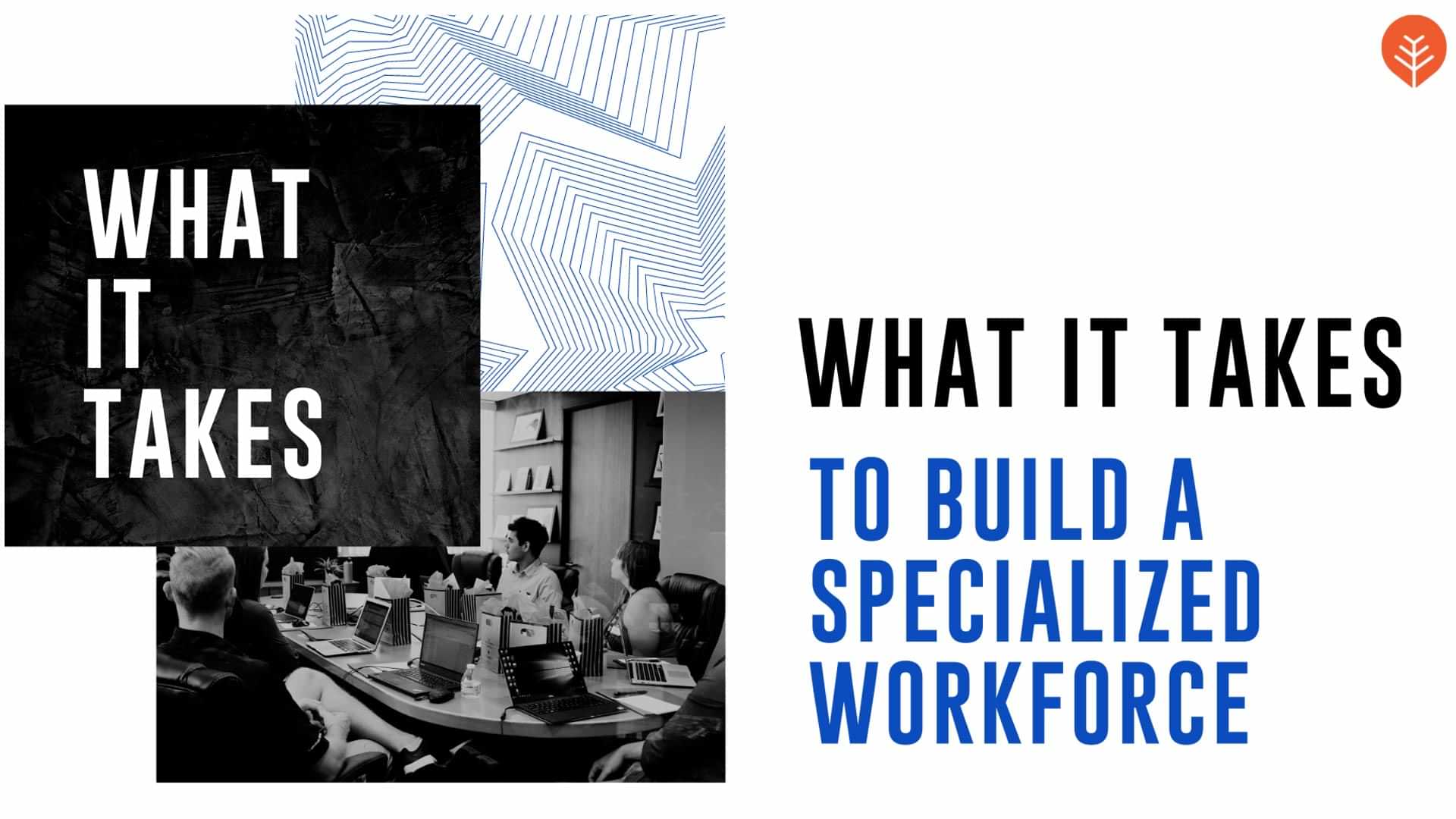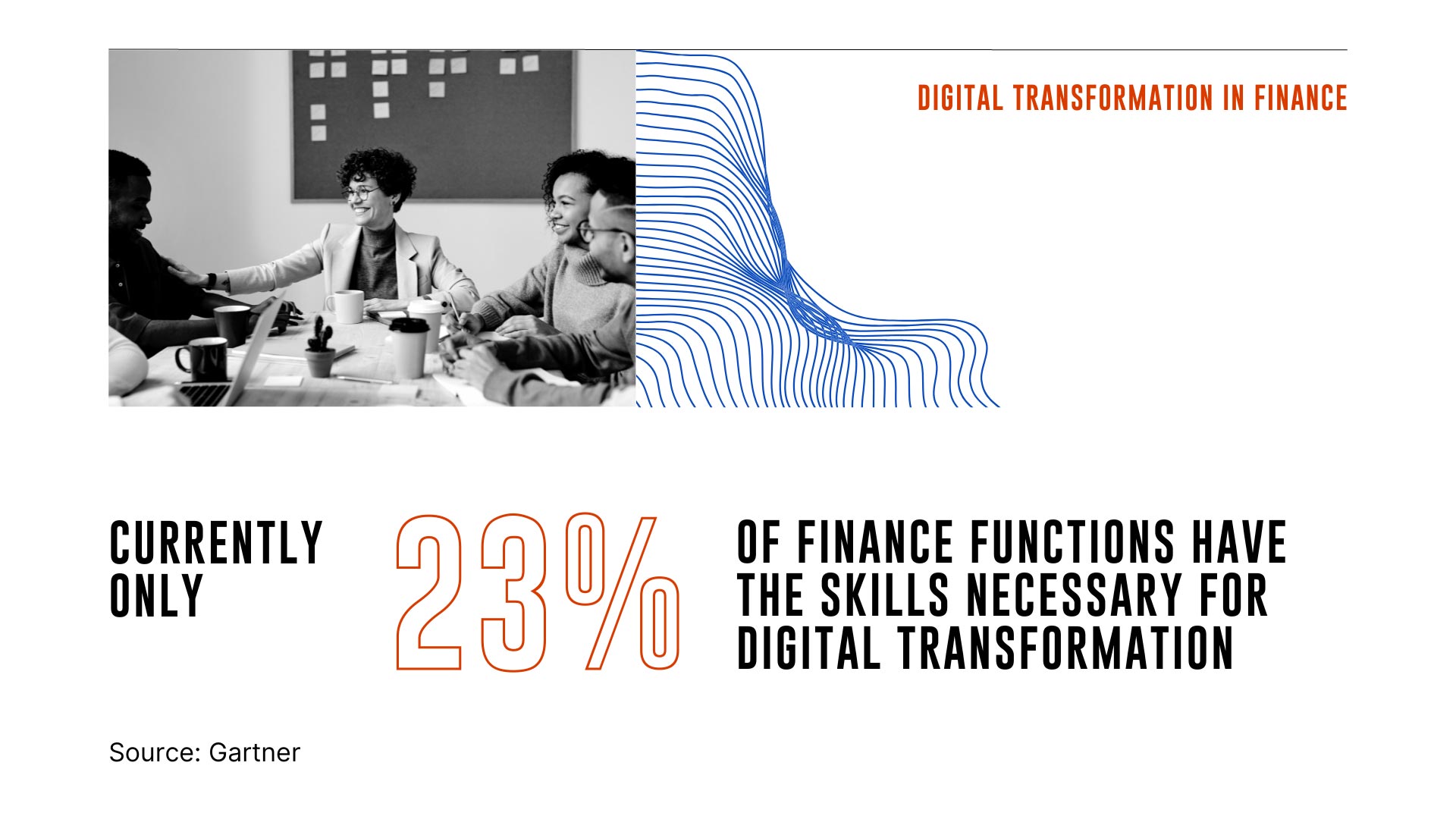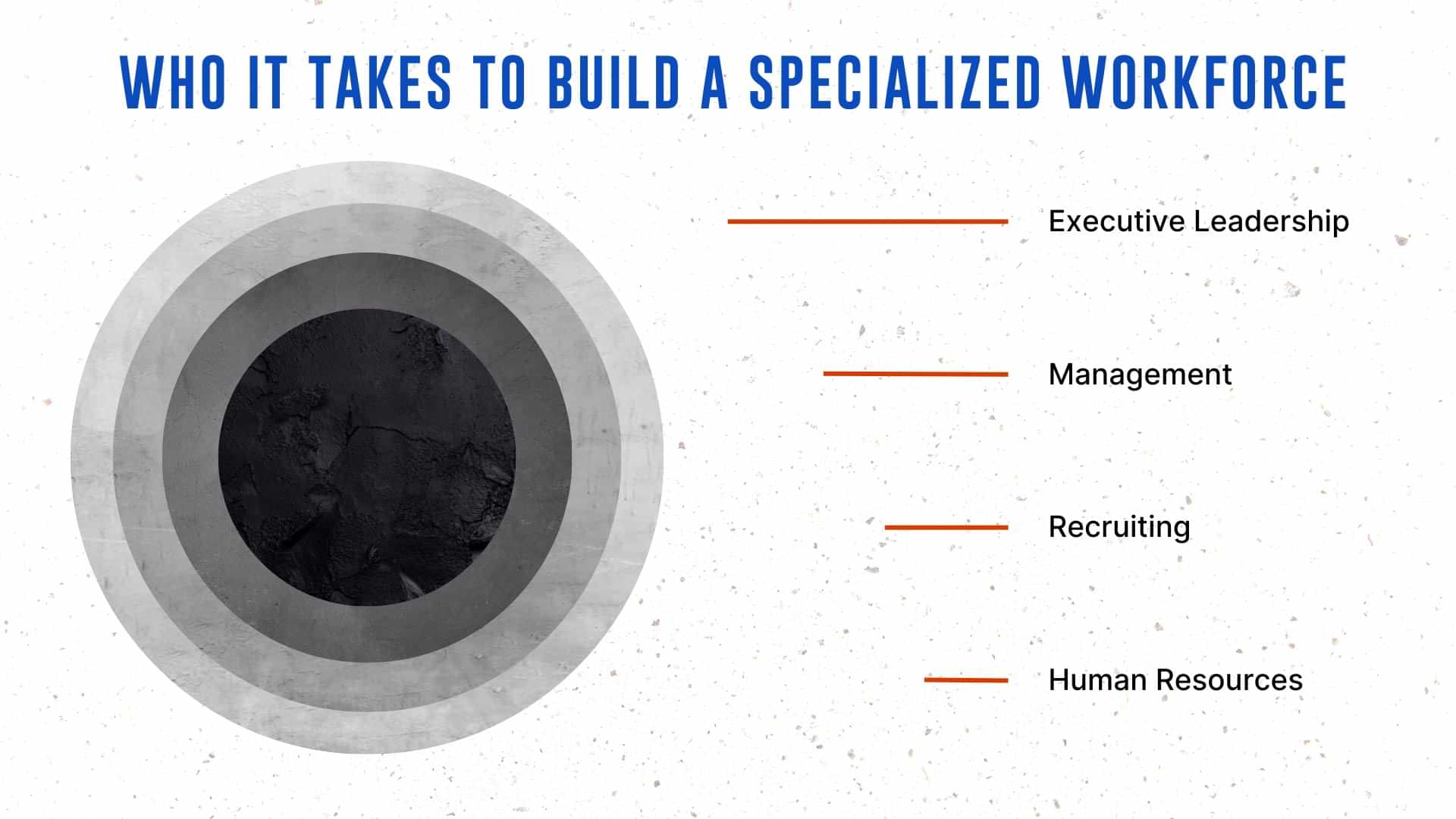The people on your teams are the building blocks of next gen positioning systems, global tourism engines, ultra-secure financial networks, industrial equipment, and recreational space travel vehicles.
Considering the current labor market, the ongoing skills crisis, and the evolving digital landscape, building a specialized workforce is priority one for leaders moving into the new year.
Teams should be cultivated with long-term skill needs in mind. In the last year, organizations have faced stiff competition for available talent and have struggled to secure mission-critical skillsets, delaying project timelines. This highlights the downfall of hiring only for current needs—experts at Deloitte suggest hiring for current needs is no longer a winning long-term strategy and instead leaders should curate, create, and cultivate talent and prioritize flexibility in new candidates.
Building a specialized workforce starts with envisioning what your workforce needs to look like and what roles are most important now and next. Hiring for current needs isn’t the ticket to long-term success, but it is still a necessary piece of the puzzle for most organizations. Identify the skill gaps affecting your team right now and roadmap the skills your team should have as it evolves over time. Immediate needs can be remedied using shorter term arrangements like contractors, consultants, or freelancers while long-term talent goals can be met by building a team with the right foundation of experience, skills, and points of view.
Here’s what (and who) it takes to build a specialized workforce:
WHAT IT TAKES
Specialized teams aren’t exclusive to technical projects. Every department from engineering to technology to finance to human resources needs specialized skillsets to do their part in furthering the organization’s overarching goals.
Consider a finance team within a global cruise line: The company has a short-term goal of launching a new e-commerce app and a long-term goal of expanding its current fleet from 10 to 14 ships by 2030. The finance function has not yet implemented digital transformation initiatives and will need to quickly begin moving into the digital age to keep up with the speed of business. According to Gartner, only 23% of finance functions have the skills necessary for digital transformation. Data science, data analytics, business intelligence, and storytelling through data will be critical moving towards digital transformation. The cruise line’s finance leaders should consider the digital skills their team needs to support the company’s new app launch and facilitate digital transformation in the short-term and the digital skills that will be needed to reach goals 6 months, 1 year, or 3 years down the line as the business’s operations expand.
Before hiring new talent, leaders need a deep understanding of their goals and long-term vision. What skills does your team need now? What skills will your team need to reach the next goal and the next after that? If you’re hiring for a completely new role or skillset, consider testing it out as a contract or contract-to-hire position to ensure you have the right composite capabilities in place. Once your needs are defined, you’ll need support from key players within your organization to attract, hire, and retain talent. This will be a collaborative effort between you, all levels of leadership, HR and talent acquisition, and the employees on your team.
Whether you’re building a team within an organization or creating a higher-level hiring strategy, use this framework to build a specialized talent pool that is equipped to propel your goals forward for years to come:
- Identify what skills your team needs to reach goals now and next
- Establish how you can hire to fill both needs (budget + timeframe)
- Source high quality talent and skills
- Attract and retain talent with a strong purpose and employee value proposition
WHY IT’S CRITICAL
You’re working toward big goals with real-world impact.
Each person within your organization is contributing to something much bigger than themselves; the next rocket launch, the heavy machinery used to build up cities across the globe, the secure apps used to sell and purchase new-to-you items, the vessels travelers board to see the world, or the sustainable transportation methods that are reducing our carbon footprint.
In tandem with generalized team members, specialized talent improves efficiency, innovation, and competitiveness. With a deep understanding in their area of expertise, specialists can work more efficiently and generate new ideas and solutions quickly. Specialized teams create a strong foundation of expertise for their organization and boost the company’s competitiveness in the market.
Teams that have deep expertise and breadth of knowledge while remaining agile and flexible are teams that win. Cultivating a specialized workforce with key talent in place is how companies create impact and innovations that change the world.
HOW TO DO IT
Identify skill gaps
Start by thinking about current and future goals. Reverse engineer those goals and identify the skillsets needed to get there. Ask yourself:
- Which skills are missing from my current team?
- Can those skills be cultivated, or do they need to be brought in?
- Will those skills provide a solid foundation for what my need will be in the future or are they only solving an immediate problem?
- Does my team have skills and experience that can be built upon – can they be reskilled and trained to meet a current or future need?
After you have a firm understanding of the skills you need you can begin linking those skills to job titles. Build job descriptions based on the needs you’ve identified and create an ideal profile for a hire that checks as many boxes as possible. Think about what roles are better suited for contractors, consultants, or freelancers versus permanent full-time hires before moving on to step two.
If gauging long-term skill needs or deciding what roles and job titles are the best choice for your team is challenging, seasoned experts can be valuable partners. Reach out to other colleagues in the industry or lean on workforce experts, like our tenured teams, to provide guidance on role titles, leveling, and long-term strategy.
Hire according to budget and timeframe
Consider business strategy when hiring – where is the company headed in terms of growth and long–term goals? With economic uncertainty, inflation, and supply chain disruptions following us into 2023, most organizations are prioritizing flexibility in all areas. Regarding high priority Q1 business goals, Labelbox’s Director of Recruiting shared with Forbes, “One top business goal to prioritize is strategic flexibility in systems, programs and especially in hiring. Take the time to go through an organizational design exercise to truly understand the delta between where you are as a company versus where you want to be in the next year. Be realistic about the company’s ability to get there given the constraints and the uncertainty in the market.” Think about how your short-term needs can be addressed while making progress toward your long-term talent needs and what the current state of the business can accommodate. Can you make 10 new hires right away or will those need to be spaced out over the next one to two years? If full-time headcount isn’t available right now, what skills are highest priority to fill with contract talent? The best talent solutions usually incorporate both contract and permanent talent and foster a balance between agility and stability.
Source talent and skills
You have many options when it comes to bringing talent onto your team. You can hire specialists that are subject matter experts in a particular area or generalists that provide a stable foundation. You can add talent to your team permanently or on an as needed basis.
Talent sourcing will be a combined effort between you and talent acquisition, whether that is your internal team or an external firm. You will need to provide a clear picture of skill needs and how they align with your goals, so that recruiting teams can find the most strategic fit.
The difficulty of the role and the timeframe in which you need to hire will guide how you hire. For immediate needs or hard to hire for skillsets it’s often most effective and efficient to partner with experienced experts that have a deep understanding of that area or industry and an established talent pipeline.
One of our areas of expertise is partnering with organizations pursuing niche, highly technical, and larger than life goals:
We helped our client, a rapidly growing national aerospace company, hire for roles across their organization when they experienced growth at a pace their internal recruiting teams couldn’t handle. Our recruiting teams took on the company’s most critical roles, sourcing and prescreening candidates according to the client’s extremely high hiring bar. The result was over 150 contract and contract to hire engineers added to our client’s teams in under 3 years and a high conversion rate of contract staff to permanent employees across engineering, accounting, and HR.
Attract and retain team
Attracting talent is the most obvious step to building a specialized workforce and the one with the heaviest consequences. The people you hire will shape business outcomes in every facet—hiring the wrong talent can affect outcomes big and small (hello, turnover costs). Retaining talent is a crucial follow-up step. In the current landscape, attracting and retaining top talent is achieved through vision and purpose and a strong employee value proposition. Employees want to know their efforts are contributing to a larger goal and making real impact while having their personal needs met.
Experts at Gartner suggest highlighting the business impact of each role along with highlighting innovative team members and technologies in job descriptions and throughout the hiring process. Sharing these elements will help you match with candidates that align with your organization’s vision and purpose and help team members feel more connected to their work—this leads to greater outcomes in the short and long term.
Regarding employee retention, the City of Boulder’s Human Resource Leader, shared with Forbes, “A top business goal to prioritize in 2023 is retention. Organizations need to train and develop all levels of management with direct reports on how to lead people. The skills for managers today are to lead with empathy, set clear expectations and balanced workloads, have a regular cadence of check-ins, and support employees’ professional development. Employees need to feel they belong here.”
To keep talent in place, there should be a clear and attractive employee value proposition. Employee value propositions (or EVPs) usually combine compensation, benefits, career progression, work environment, and company culture. Organizations should establish an EVP that works for them and can stand up to what competitors offer—in a tight labor market like this one, employees with in-demand skills need a reason to choose to work for you.
WHO IT TAKES
Executive Leadership
High-level leadership plays a critical role in instilling a strong vision and purpose that inspires employees, taking a top-down approach to values that rings true at each level from executive leadership to entry level employees. Executive leadership equips management with the knowledge and support needed to hire strategically. Leaders should place value on employee engagement and retention and evaluate and update compensation, benefits, and flexibility along with employee needs.
Management
Every level of management is responsible for building specialized teams with shared values, diverse backgrounds, complementary strengths, and commitment to the organization’s mission. Managers foster employee engagement by emphasizing the business impact of their contributions and the real-world applications of their work. Managers steer hiring by understanding and identifying skill gaps and attract and retain top talent by championing fair comp, benefits and work arrangements that fit their employee’s needs.
Recruiting
Recruiters, both internal and external, source in demand skill sets and match candidates with strong alignment to the company’s values and purpose. Recruiters develop a deep understanding of the team’s goals and current and future needs and apply that to their candidate search. As the first point contact between an organization and a candidate, recruiters play a key role in conveying company vision, values, and the importance of each job function. For fast-turnaround or niche hiring, partner with a staffing agency specialized in technical recruiting for those skillsets.
Human Resources
HR teams continuously build equitable and competitive compensation packages and advocate for benefits and perks that will keep critical talent in place. Employee wants and needs have evolved dramatically since 2020. In the current market, it takes more than standard pay raises and average benefits to attract and retain talent as job tenure declines year to year and HR helps guide how you can win the competition for talent.
Build a specialized workforce for what’s now and what’s next.
Partner with industry-specialized workforce experts to hire who it takes to get work done, short term and long term.



